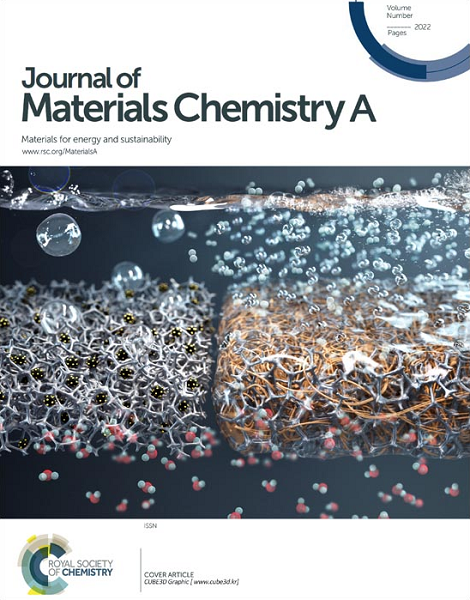碳捕获材料研究的最新进展:材料合成和工程应用的创新优化
IF 10.7
2区 材料科学
Q1 CHEMISTRY, PHYSICAL
引用次数: 0
摘要
全球变暖是当今世界面临的主要环境威胁,而二氧化碳作为主要的温室气体,对气候变化有着重大影响。为了应对这一全球性挑战,碳捕获技术已被提出作为降低大气中二氧化碳浓度的关键措施。本文综述了碳捕获技术的最新研究进展,重点介绍了吸附技术在提高效率和降低能耗方面的潜力。我们详细讨论了材料系统的创新,如金属有机框架(MOFs)、多孔有机聚合物(POPs)、多孔碳基材料、功能化吸附剂和离子液体在碳捕获和转化领域的应用。同时,从固体废物资源化的角度,综述了炼油渣、生物质、天然矿物材料、木质素等固体废物衍生碳捕集材料的研究进展,为碳捕集材料的可持续利用提供了新的思路。本文进一步讨论了吸附剂的制备方法、回收性能和再生技术,以及二氧化碳捕集中物理吸附和化学吸附的机理和过程。特别指出了变压吸附(PSA)和变温吸附(TSA)等工艺在工业应用中的潜力和挑战。本文旨在为碳捕集材料的研究提供理论依据和实际应用参考,强调碳捕集与利用技术在促进低碳发展和减缓全球变暖方面的重要作用。随着技术的不断进步,我们期待这些研究成果将为全球气候目标的实现提供强有力的支持。本文章由计算机程序翻译,如有差异,请以英文原文为准。
Recent advancements in carbon capture materials research: innovative optimization of materials synthesis and engineering applications
Global warming is a major environmental threat facing the world today, and carbon dioxide (CO2), as a major greenhouse gas, has a significant impact on climate change. To address this global challenge, carbon capture technology has been proposed as a key measure to reduce CO2 concentration in the atmosphere. In this paper, we review recent research advances in carbon capture technologies, with special emphasis on the potential of adsorption technologies to improve efficiency and reduce energy consumption. We discuss in detail the innovations of material systems such as metal-organic frameworks (MOFs), porous organic polymers (POPs), porous carbon-based materials, functionalized adsorbents, and ionic liquids in the field of carbon capture and conversion. Meanwhile, this paper also examines the research progress of solid waste-derived carbon capture materials, such as refinery slag, biomass, natural mineral materials and lignin, from the perspective of solid waste resourcing, which provides new ideas for the sustainable utilization of carbon capture materials. This paper further discusses the preparation methods, recycling performance and regeneration technologies of adsorbents, as well as the mechanisms and processes of physical adsorption and chemical adsorption in carbon dioxide capture. In particular, the potential and challenges of processes such as pressure-variable adsorption (PSA) and temperature-variable adsorption (TSA) for industrial applications are pointed out. The review aims to provide a theoretical basis for the research of carbon capture materials and a reference for practical applications, emphasizing the important role of carbon capture and utilization technologies in promoting low-carbon development and mitigating global warming. With the continuous advancement of technology, we expect that these research results will provide strong support for the realization of global climate goals.
求助全文
通过发布文献求助,成功后即可免费获取论文全文。
去求助
来源期刊

Journal of Materials Chemistry A
CHEMISTRY, PHYSICAL-ENERGY & FUELS
CiteScore
19.50
自引率
5.00%
发文量
1892
审稿时长
1.5 months
期刊介绍:
The Journal of Materials Chemistry A, B & C covers a wide range of high-quality studies in the field of materials chemistry, with each section focusing on specific applications of the materials studied. Journal of Materials Chemistry A emphasizes applications in energy and sustainability, including topics such as artificial photosynthesis, batteries, and fuel cells. Journal of Materials Chemistry B focuses on applications in biology and medicine, while Journal of Materials Chemistry C covers applications in optical, magnetic, and electronic devices. Example topic areas within the scope of Journal of Materials Chemistry A include catalysis, green/sustainable materials, sensors, and water treatment, among others.
 求助内容:
求助内容: 应助结果提醒方式:
应助结果提醒方式:


